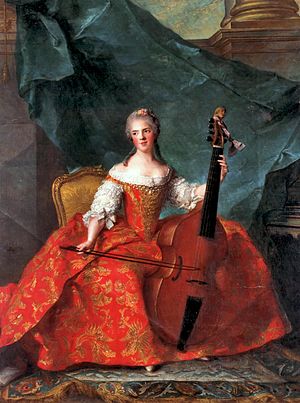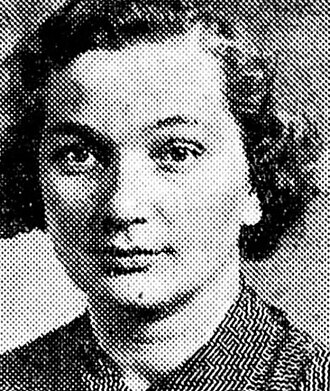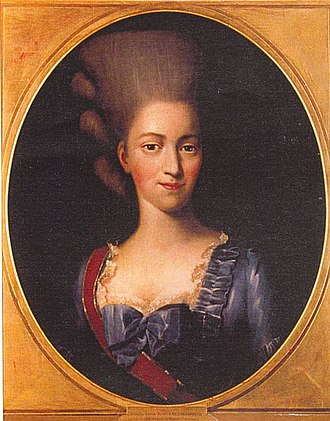Discover Your Roots
SIGN UPDiscover Your Roots
SIGN UPHenriette is a charming female name of French origin, meaning "Ruler Of The Home." This elegant name has a rich historical significance, with notable individuals bearing the name throughout history. From Duchess of Nevers Henriette of Cleves to modern-day politicians like Henriette Reker, the name Henriette has been associated with women of influence and strength. Additionally, Henriette is also linked to various other accomplished individuals, including feminist Henriette Chandet and Swedish composer Henriette Löfman. Furthermore, the name has been used in geographical locations like Henriette, Minnesota, and has even been referenced in a 1952 French film, La fête à Henriette. With its regal meaning and historical significance, Henriette is a name that exudes grace and authority.

Henriette Marx (née Pressburg) was a Dutch woman known as the mother of the renowned communist philosopher Karl Marx. Born on September 20, 1788, in Nijmegen, the Netherlands, she was part of a prosperous Jewish family, with her father working as a textile merchant. Henriette married Hirschel Marx, later known as Heinrich Marx, in 1814, and the couple moved to Trier, where they had nine children, including Karl Marx. Despite financial wealth, the family lived frugally after Heinrich's death in 1838. Henriette had a complex relationship with Karl, expressing concerns about his lifestyle and health while also facing disagreements regarding financial support. Karl's requests for advances on his inheritance strained their relationship, leading to icy and distant interactions. Henriette passed funds to Karl occasionally, but their relationship remained tense. Despite their differences, Henriette played a significant role in Karl's life, providing guidance and support, albeit amidst conflicts and disagreements.

Anne Henriette of France (14 August 1727 – 10 February 1752) was a French princess, known for her sweet and gentle personality as the favorite daughter of King Louis XV and Queen Marie Leszczyńska. Born at the Palace of Versailles, she and her twin sister, Louise Élisabeth, were considered a political disappointment due to Salic law disqualifying them as heirs to the throne. Despite this, their father was delighted with their birth. Raised in Versailles under the supervision of the Governess of the Children of France, Anne Henriette's adult life saw her participating in court life and arranging festivities. Described as gentle, reserved, and intensely loyal, she was known for her musical gift and was considered prettier than her elder twin. While no serious marriage negotiations were made for her, she reportedly fell in love with her cousin, Louis Philippe, heir to the House of Orléans, but the marriage plans were discontinued due to her father's disapproval. Anne Henriette was deeply hurt by her father's extramarital affairs and was devoted to working for the political ambitions of her twin sister, Élisabeth. Despite her short life, Anne Henriette of France left a lasting impression with her gentle nature and loyalty to her family.

Henriette Bie Lorentzen (18 July 1911 – 23 August 2001) was a Norwegian journalist, humanist, peace activist, feminist, and a key figure in the resistance movement during World War II. She was also a co-founder of the Nansen Academy and the publisher and editor-in-chief of the women's magazine Kvinnen og Tiden. Born Anna Henriette Wegner Haagaas in Vestre Aker (now Oslo), Lorentzen was deeply involved in promoting humanist philosophy and women's issues. During the war, she was arrested and tortured by the Gestapo, and later transferred to Ravensbrück concentration camp, where she remained until the end of the war. Upon her return, she co-founded Kvinnen og Tiden, believing women should have a central role in rebuilding the country. Lorentzen's dedication to women's rights and humanism left a lasting impact, as she worked alongside influential figures such as Kirsten Hansteen and Elisabeth Tamm in promoting women's voices. Her legacy continues to inspire and empower women to this day.

Henriette Johanne Marie Müller, known as the Zitronenjette, gained popularity in Hamburg in the late 19th century. Born in Dessau in 1841, she became renowned for selling lemons during the day on Grasbrook and in the pubs of Neustadt at night, often calling out "Zitroon! Zitroon!" Sadly, due to alcoholism and mental illness, she was admitted to the Friedrichsberg asylum in August 1894. Despite her struggles, a memorial to her stands on Ludwig-Erhardt-Straße near St. Michaelis' Church, bearing a poignant Low German inscription. Furthermore, her life inspired various theatrical works, including a play performed in the Ernst-Drucker-Theater in 1900 and a production with music by Paul Möhring in the 1920s. Notably, the role of Zitronenjette was often portrayed by male actors. In her memory, Müller's legacy continues to live on through these artistic representations and the memorial in Hamburg.

Henriette Louise de Waldner de Freundstein, Baronne d'Oberkirch (5 June 1754 – 10 June 1803) was a renowned French aristocrat, socialite, and memoirist. She chronicled her experiences and provided invaluable insights into high society during the end of the ancien régime. Born in Schweighouse-Thann, Alsace, to François Louis Waldner de Freundstein, Baron de Waldner and Wilhelmine Auguste Berckheim de Ribeauvillé, she married Baron Charles Frédéric Siegfried d'Oberkirch and had a daughter, Marie-Philippine Frédérique Dorothée. Henriette's extensive travels and interactions with notable figures such as the Grand Duchess Maria Feodorovna and Goethe further enriched her memoirs. Her literary works are treasured for their depiction of court society in Alsace, Montbéliard, Stuttgart, Paris, and Versailles. Notably, she even immortalized the whipped cream served at a lunch at the Hameau de Chantilly, which later became known as Crème Chantilly. Henriette's memoirs were later edited and published, offering readers a captivating glimpse into her extraordinary life and the vibrant society she inhabited.
All images displayed on this page are sourced from Wikipedia or Wikimedia Commons.We use these images under their respective Creative Commons or public domain licenses. Wherever applicable, author attributions and license information are provided. If you believe an image is used incorrectly or outside its license terms, please contact us so that we can review and correct the issue.